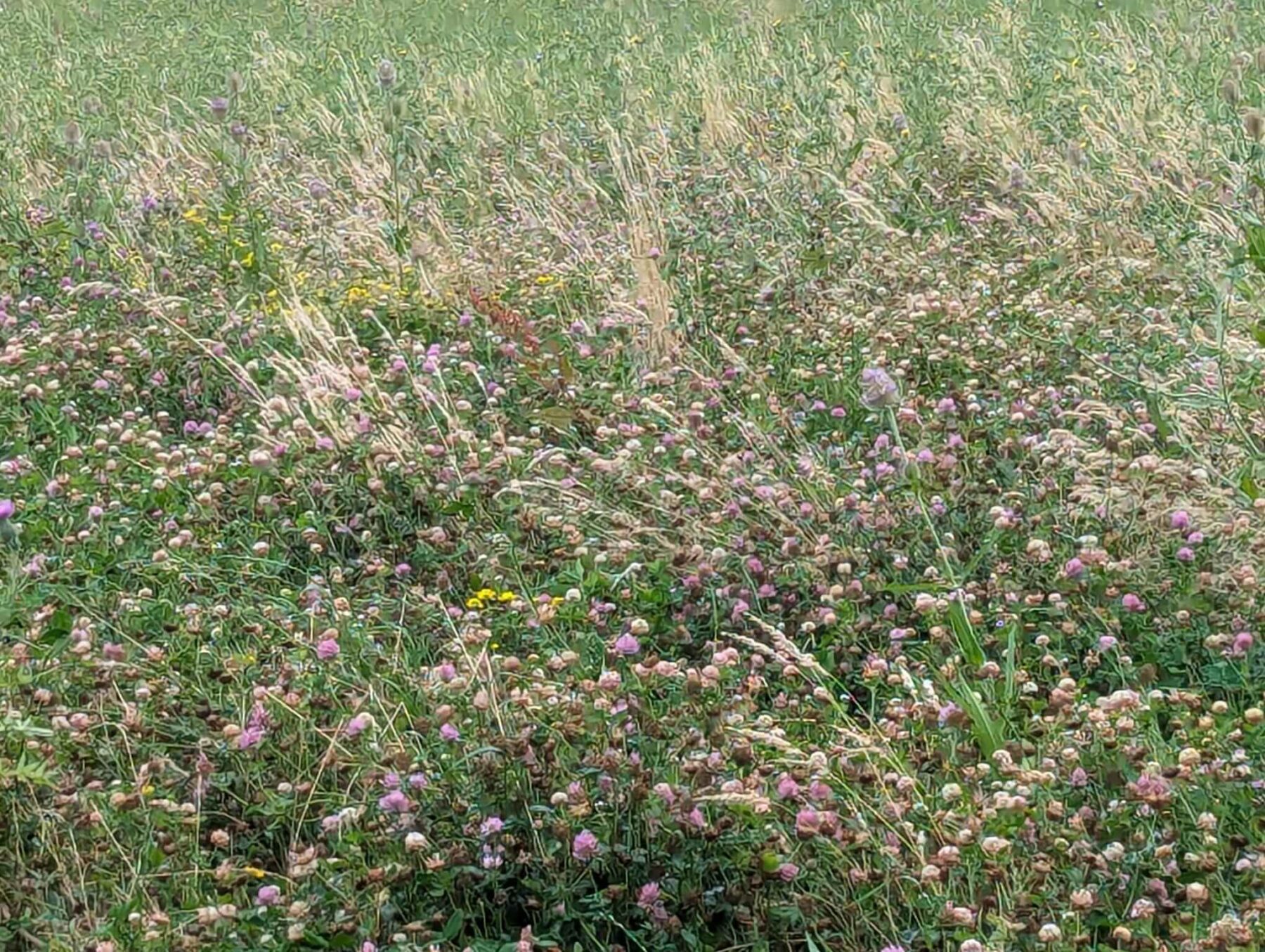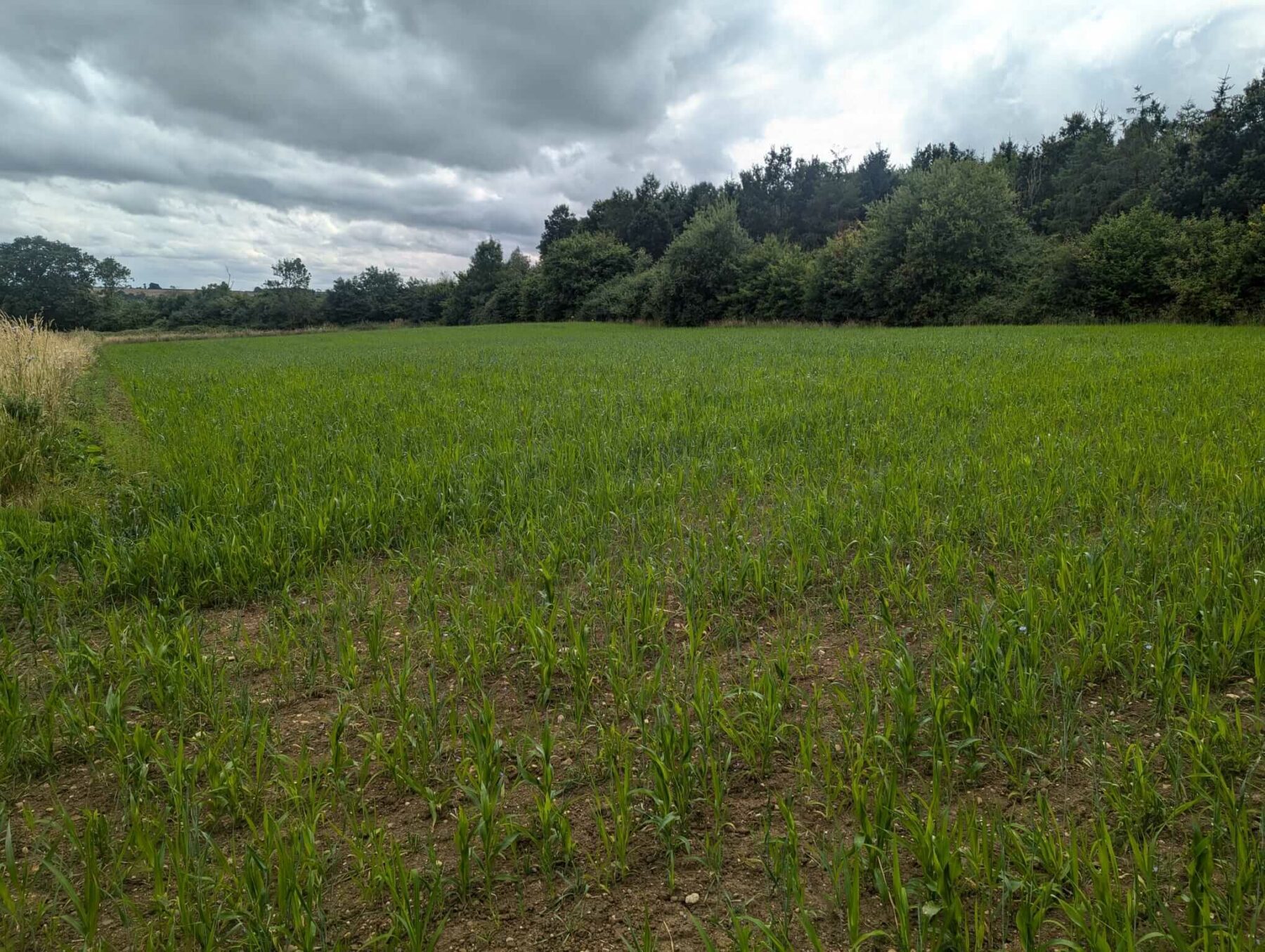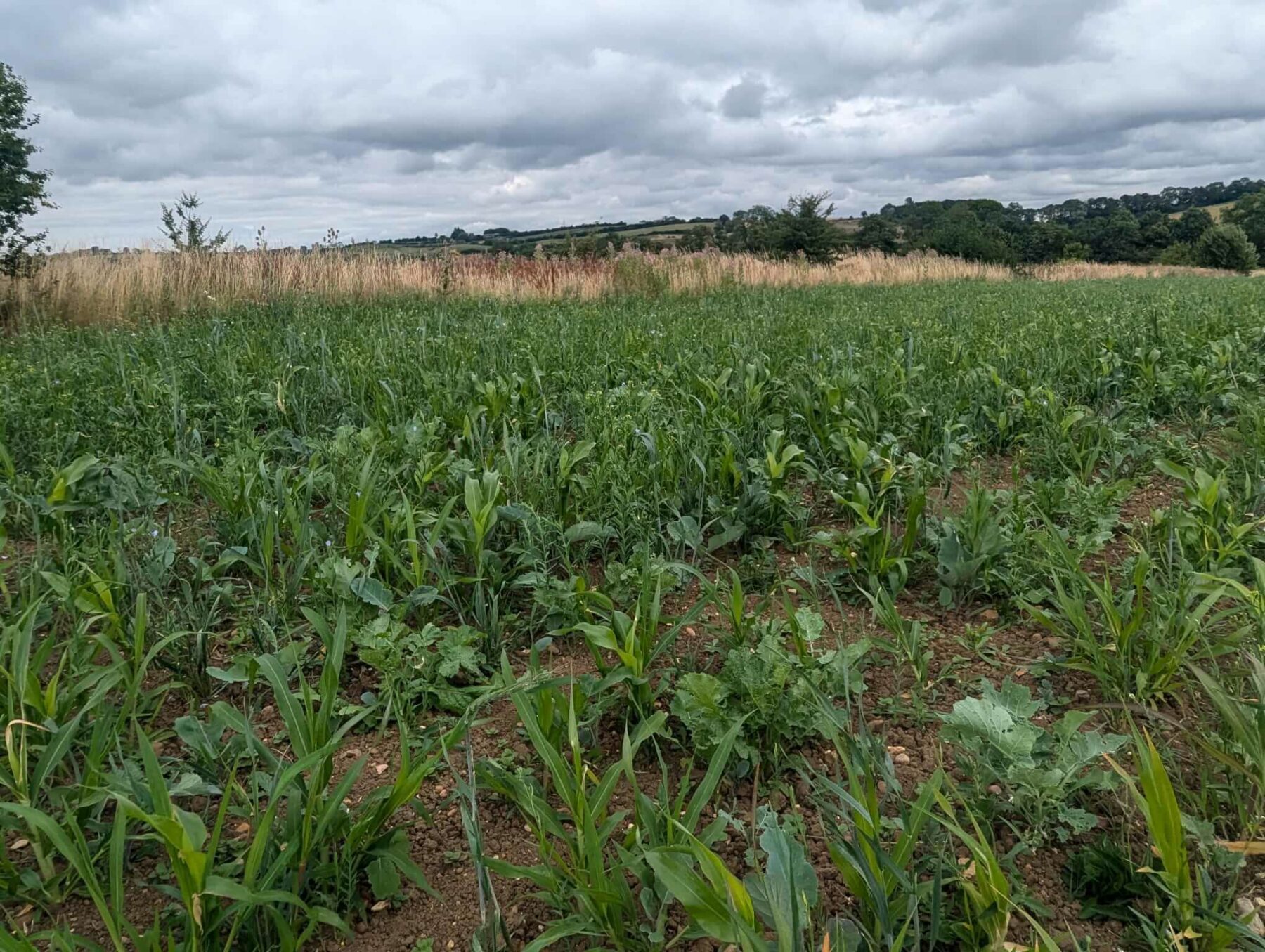Allerton is into its fourth year of a Countryside Stewardship mid-tier agreement, so all options are already established. Trying to work out where everything is and each options’ requirements, I spent a lot more time in the office than I would have liked! Many of the Beetle Banks (AB3s) and Flower Rich Margins (AB8s) have been established since the mid 90s and have been doing their job well, with the slight exception of too much grass in a few of the AB8 plots. After cutting in September, I aim to stitch in more flowers.
The rotational multi-year options are taking up more time. The AB16s (autumn sown winter bumblebird mix) need reestablishing every two years, and there are 3.79ha on the estate. These will be established during August, if there is enough moisture in the soil.

Nectar Flower Mix
The AB1 option, Nectar Flower mixes, are struggling with grass weeds. I topped 50% of the plots in early June before the grasses had gone to seed to try and reduce their volume. This had a good impact and allowed the clovers to become more established. I plan to top 100% of the plots over this winter.
The Winter Bird Food (AB9) options are either annual or bi-annual mixes. As part of the CS agreement, the estate has six hectares of AB9s. Unfortunately, none of the bi-annuals were on track to make a second year so the decision was made to re-establish all of them. Every pheasant drive on the estate has an AB9 as part of it, so they are extremely important to get right – we do not want an angry keeper! We have drilled three different Kings mixes this year. The Campaign mix, which I’m told does particularly well on our heavy soil type is an annual option comprising of barley, red, white and reed millet, triticale, linseed, fodder raddish and wheat. A good sterile seed bed is key for establishment. We drilled on the 14th and 15th June as prior to this, soil temperatures had been too low. The soil wants to be around 13 Celsius for quick establishment. As you can see, the Campaign mix is now looking very well! (picture taken 05/08/24).

Campaign Mix

Take Off Mix
Take Off is the biannual mix we chose to use this year, offering a diverse range of plants including kale, fodder radish, chicory, gold of pleasure, linseed, dwarf sorghum, red millet, triticale, white millet and utopia. It has the advantage of biannual establishment, however there aren’t any pre emergence weed control options, and the cabbage stem flea beetles like to eat the kale! Unfortunately, this was the case on two of our plots meaning we had to reestablish in late July with a Universal mix which contains fodder radish, kings kale rape, brown mustard, white mustard, utopia, turnip rape and tataricum wheat. It’s the go-to option for late summer establishment. With the rain we had in the first few days of August, ours is already coming through nicely.
We’ve made excellent progress but the work never stops! Next on the list is to establish the AB16s (Autumn sown bumblebird mix, and AB15s (two year sown legume fallow) and get through harvest! After that, I’ll do the mowing for the AB8s (flower rich margins and plots) and AB1s (nectar flower mix) and the topping for the SW1s (406m buffer strip on cultivated land) and SW3s (in field grass strips). And after all that, I’ll start work on our Capital Grants options of hedge laying and coppicing!
As ever, big thanks to Kings for providing the seed here at Allerton and for all their advice and assistance. With a diverse and extensive scheme, there is a lot to get your head around, so grateful for their help!

